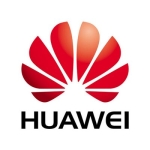What is our primary use case?
We use 3PAR as our centralized storage for database use, mostly. It's also data stores for our VMs. We have a few Oracle Databases running on 3PAR and we have our production VMs running on 3PAR, as well.
How has it helped my organization?
Before using centralized storage, we needed to make sure that we have enough physical disks installed in a server. Now, we know exactly the capacity that we need for the upcoming year, and it's much easier for us to enlarge the capacity and expose these disk volumes to the relevant servers. Again, in our case, it's mostly the databases.
All-flash positions our organization for growth in a way, mostly for performance, because again, we're using all-flash for the performance that it provides, and we have critical databases running on it. It's providing day-to-day functionality, the way I see it.
What is most valuable?
- The ease of use, from one perspective
- The centralized storage
- The ease of copying, backing up, and moving data from one server to the other
What needs improvement?
I would like to see more visibility regarding issues - active alerting. I know that InfoSight is currently trying to do what Nimble did for its storage. If it were proactively alerting regarding maintenance or something that's going to go bust, it could be very useful for us.
What do I think about the stability of the solution?
All in all, it's a stable solution. From an availability perspective, we have it in both data centers.
We found one huge bug when we implemented the solution, a critical bug that eventually crashed and shut down the storage, which is something that we cannot live with. But since then, a patch was provided for this issue, and over the last a year-and-a-half we haven't had any stability issues whatsoever.
What do I think about the scalability of the solution?
The scalability is problematic. We would like to scale with our current infrastructure but we can't. We need to actually buy additional components, not just add disks. We actually need to buy additional controllers and, eventually, another storage unit. So it's not good enough.
How are customer service and technical support?
The technical support is not good. Usually, when we have a problem, it takes ages until we get a response. We need to escalate several times, using HPE and the partner in Israel to make sure that we get the appropriate response. Usually, what we know or what we find out right away, is the same response that we get from support a week or two later - that something is happening. And only a month after that do we get a good solution that we can do something with.
Which solution did I use previously and why did I switch?
From a technical perspective, we understood the benefits of having centralized storage. From that point on we looked for what was supposed to be the right solution for us. Eventually, we zeroed in on the 3PAR solution and not the competition.
How was the initial setup?
The initial setup was complex. It's not a straightforward integration. There are a lot of parameters that you need to configure, and each parameter affects a lot of other things. Even though we used a partner for the implementation, after the installation in the data center we needed to rebuild everything and reconfigure everything several times. At the beginning, it wasn't good. Now we are stable so, except for the performance issue, everything is working as we expect it to work.
What about the implementation team?
We used an integrator. The guys are great, responsible. They did what they were supposed to do. They worked with HPE regarding the sizing of the storage solution, and it seems like someone there didn't do his job correctly. I don't know if it was HPE or the partner. But eventually, we had a problem.
What was our ROI?
It's a much more expensive solution than just buying local disks. On the other hand, it provides us a centralized point of management for all our storage. I can't tell you the exact ROI, but the simplicity and the centralization of the storage probably provide us with some kind of a return.
Which other solutions did I evaluate?
We looked at NetApp. We also evaluated hyperconverged solutions like Nutanix, but it was not relevant at the time. And we were approached by HPE regarding SimpliVity but it was not relevant as well, at the time.
We went with 3PAR because, at the time, we were convinced that this would provide us the solution that we need, from several KPIs that we were looking at. We were promised performance that we didn't get in the end.
What other advice do I have?
Check the performance and every technical aspect that you can, as much as you can. Don't trust anyone else telling you otherwise. Test everything yourself.
The biggest lesson I've learned from using this solution is that having centralized storage is the right way to go and that sizing is everything. If you don't do the sizing right and you don't understand every detail of the product, how it works, you can be in a very unpleasant situation when you pay half a million dollars and you have a product that does not work as you expected.
What every IT guy will tell you is that we disable the dedupe, mostly because of the hit on the performance. Regarding InfoSight predictive analytics, we tried to use it. It was not that predictive because it doesn't give as much information as we were told. We had actually turned it on and we had a few critical issues but we got no alerts from InfoSight regarding them.
It increased performance for a while, but then, as we grew, and we did not grow significantly, performance dropped down. For a few of our critical, online systems, we went back to using the physical disks and not the centralized storage.
It was supposed to improve throughput but it was not enough, not as much as we were told before we bought the product.
We have talked about using the flex-capacity offering, HPE GreenLake, but we haven't used it yet.
From our experience, I would rate low, but I don't want to rate it low because from a technical perspective, it's a stable solution, it works. I would give the product a seven out of ten, even though our experience has not been that good. A seven is fair at this point.
Disclosure: My company does not have a business relationship with this vendor other than being a customer.











